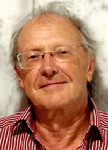|
A two-volume ebook, that reveals the risks of psychiatric drugs, on the market in 1996, as well as the risks of electroshocks ruthless and easy to understand. With advices how to withdraw responsible. The two-volume publication addresses primary to the treated persons and their relatives und enables them a grounded and independent decision: taking psychiatric drugs in spite of considerable risks for the health Ÿ or better not. If already a damage is done, then the proof should be made easier, that it was caused by the treatment. Workers in the psychosocial system can use the book as manual and work of reference. Antidepressants, lithium, neuroleptics, tranquilizers, psychostimulants and carbamazepine are given to more and more human beings Ÿ especially to women, children and the elderly Ÿ in increasing doses and in combinations that have effects not to calculate. Though a critical knowledge about their dangers is more important than ever. A chapter by its own is dedicated to the potential of dependence on these substances as well as to advices how to come down. Peter Lehmann, D. Phil. h.c. Born in 1950. Education in pedagogy. Living as independent publisher and author in Berlin. In 1989, co-founder of the Organisation for the Protection from Psychiatric Violence, running the Runaway-house Berlin. In 1991, co-founder of the European Network of (ex-) Users and Survivors of Psychiatry (ENUSP); from 1997-1999, Chair of ENUSP; until 2010, board member. In 2010, awarded with an Honorary Doctorate in acknowledgement of "exceptional scientific and humanitarian contribution to the rights of the people with psychiatric experience" by the School of Psychology of the Aristotle University of Thessaloniki, Greece, Faculty of Philosophy. In 2011, awarded the Order of Merit of the Federal Republic of Germany by the President of Germany. English publications include, Withdrawal from Prescribed Psychotropic Drugs (edited in 2021 together with Craig Newnes); Coming off Psychiatric Drugs: Successful Withdrawal from Neuroleptics, Antidepressants, Mood Stabilizers, Ritalin and Tranquilizers (edited in 2004; e-book in 2025); Alternatives beyond Psychiatry, edited together with Peter Stastny in 2007 (e-book in 2025). More about Peter Lehmann Additional information to "Brave New Psychiatry" Tranquilizers (alium etc.), lithium, antidepressants (Prozac etc.), neuroleptics (Haldol etc.), carbamazepine (Tegretol etc.) and psychostimulants (Ritalin etc.) are used more and more in the psychiatric and medical system, especially in the general medicine and the paediatrics. Since 1985 the trend steadily goes away from tranquilizers and towards antidepressants and neuroleptics. In Germany, on average 70% of all psychiatric drugs are administered to women, with increasing age in rising tendency. Every seventh psycho-pill is swallowed by children less than twelve years old. 15% of all children and adolescents and 25% of all adults are considered as mentally disturbed, so they are possible consumers. Nothing points out that the situation outside of Germany is fundamentally different. In general, the treated persons do not receive information about the probable, the possible and the not-excludable risks. They do not know, that some substances had to be withdrawn from the drug-market in the one countries, but are sold without restriction in the other countries, for example penfluridol (brand name: Semap) as a possible carcinogen, remoxipride (Roxiam) because of blood damage, and triazolam (brand names: Halcion, Hypam) in connection with amnesia and black-outs. If people want to have full information on the risks, which are connected with the administration of psychiatric drugs and electroshocks, they have to give serious thoughts to their mechanisms and effects, especially when doctors' interests in full information leave much to be desired. "Brave New Psychiatry" consists of two volumes, which are enclosed particularly. Peter Lehmann: "Brave New Psychiatry", Vol. 1: "Wie Chemie und Strom auf Geist und Psyche wirken" (= "How chemistry and electricity work on mind and psyche"), E-Book. See full information at www.antipsychiatrieverlag.de/snp1.htm English language order form for orders directly at Peter Lehmann Publishing / German language order form In the centre of attention in this volume are the many and diverse risks and damages in the psychic and mental system. Main topics are: drug-caused emotional impoverishment, changing of the personality, depression, desperation, suicide, confusion, delirium and psychotic states; disturbances of the senses, memory, concentration, sleep and dreams; self-trials of doctors; animal experiments. In a special chapter Leonard Roy Frank, the US-American expert on damages of electroshocks, shows the negative effects (especially loss of memory) of this disputed method. With an extensive register and 1102 sources from all over the
world. English language order form for orders directly at Peter Lehmann Publishing / German language order form In the centre of attention here are the psychiatric drugs' short-term, medium-term and long-term risks and damages, which find expression in the muscle and autonomic system, for example as Ÿ partly life-dangerous Ÿ muscle-cramps, movement-disorders, genetic damages, harms to the liver, heart and sexual-organs. A chapter by its own is dedicated to the potential of dependence on theses substances. Its special status is caused by the fact, that their administrators Ÿ with the exception of tranquilizers Ÿ deny their potential of dependence. They conceal possible withdrawal-symptoms, rebound-phenomenons, supersensibility-reactions of the receptors as well as possible irreversible drug damages and change the definitions into symptoms-alteration: for example chronic anxiety after long-term administration of antidepressants or tranquilizers, states of confusion after withdrawal from lithium and chronic psychosis after administration of neuroleptics. Prudent advices, how the risk of relapse can be reduced and how withdrawal-effects can be mitigated, balance this volume. With an extensive register, too, and 1677 sources from all over the world. |

 2
volumes. E-book edition. Berlin / Lancaster: Peter Lehmann
Antipsychiatrieverlag 2025 (based upon the 1996 print edition).
Published in the German language!
2
volumes. E-book edition. Berlin / Lancaster: Peter Lehmann
Antipsychiatrieverlag 2025 (based upon the 1996 print edition).
Published in the German language!
